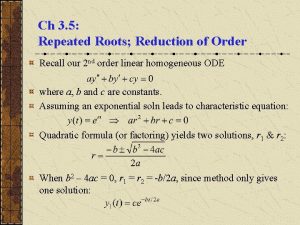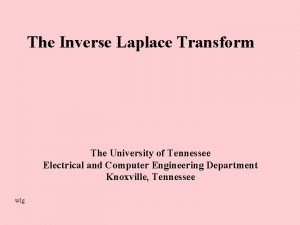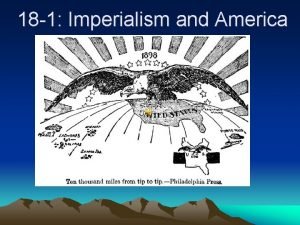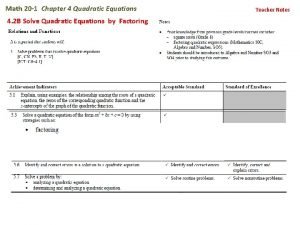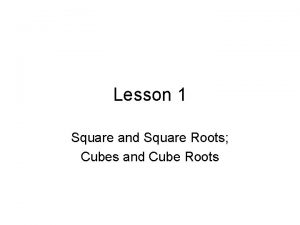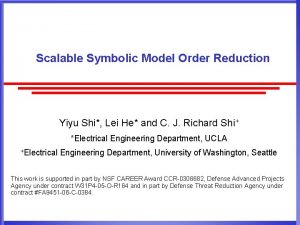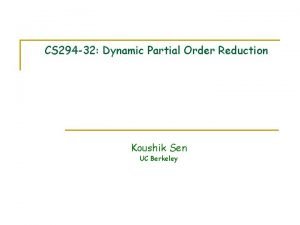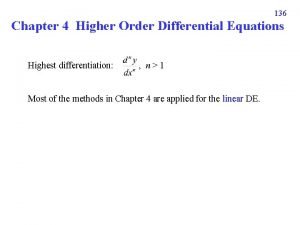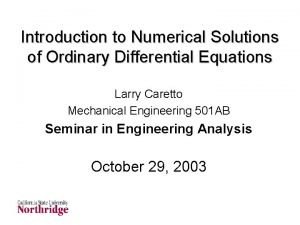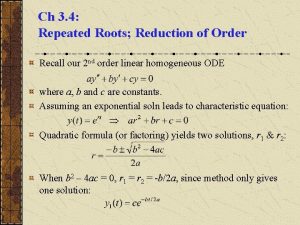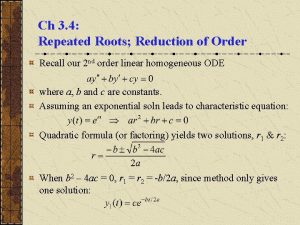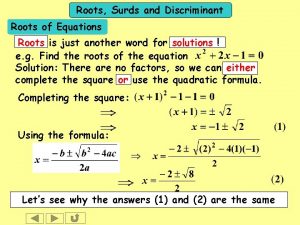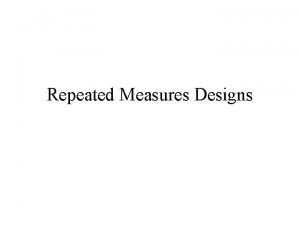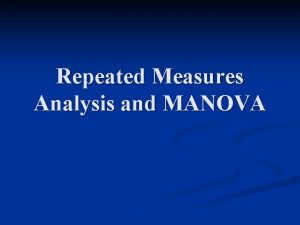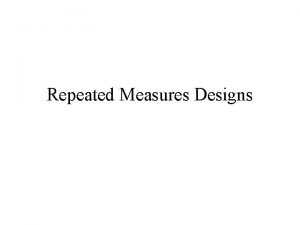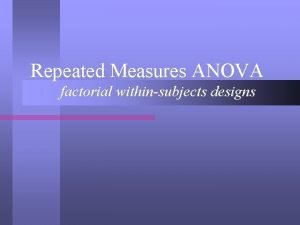Ch 3 5 Repeated Roots Reduction of Order












- Slides: 12

Ch 3. 5: Repeated Roots; Reduction of Order Recall our 2 nd order linear homogeneous ODE where a, b and c are constants. Assuming an exponential soln leads to characteristic equation: Quadratic formula (or factoring) yields two solutions, r 1 & r 2: When b 2 – 4 ac = 0, r 1 = r 2 = -b/2 a, since method only gives one solution:

Second Solution: Multiplying Factor v(t) We know that Since y 1 and y 2 are linearly dependent, we generalize this approach and multiply by a function v, and determine conditions for which y 2 is a solution: Then

Finding Multiplying Factor v(t) Substituting derivatives into ODE, we seek a formula for v:

General Solution To find our general solution, we have: Thus the general solution for repeated roots is

Wronskian The general solution is Thus every solution is a linear combination of The Wronskian of the two solutions is Thus y 1 and y 2 form a fundamental solution set for equation.

Example 1 Consider the initial value problem Assuming exponential soln leads to characteristic equation: Thus the general solution is Using the initial conditions: Thus

Example 2 Consider the initial value problem Assuming exponential soln leads to characteristic equation: Thus the general solution is Using the initial conditions: Thus

Example 3 Consider the initial value problem Assuming exponential soln leads to characteristic equation: Thus the general solution is Using the initial conditions: Thus

Reduction of Order The method used so far in this section also works for equations with nonconstant coefficients: That is, given that y 1 is solution, try y 2 = v(t)y 1: Substituting these into ODE and collecting terms, Since y 1 is a solution to the differential equation, this last equation reduces to a first order equation in v :

Example 4: Reduction of Order (1 of 3) Given the variable coefficient equation and solution y 1, use reduction of order method to find a second solution: Substituting these into ODE and collecting terms,

Example 4: Finding v(t) (2 of 3) To solve for u, we can use the separation of variables method: Thus and hence

Example 4: General Solution (3 of 3) We have Thus Recall and hence we can neglect the second term of y 2 to obtain Hence the general solution to the differential equation is
 Repeated roots reduction of order
Repeated roots reduction of order Inverse laplace transform with complex roots
Inverse laplace transform with complex roots Existence and uniqueness of square roots and cube roots
Existence and uniqueness of square roots and cube roots The roots of american imperialism economic roots
The roots of american imperialism economic roots Vanessa jason
Vanessa jason Product of roots of a quadratic equation
Product of roots of a quadratic equation Perfect squares
Perfect squares Opposite of squaring
Opposite of squaring 1st order 2nd order 3rd order neurons
1st order 2nd order 3rd order neurons Yiyu shi
Yiyu shi Dynamic partial order reduction
Dynamic partial order reduction Auxiliary equation
Auxiliary equation Modified euler method formula
Modified euler method formula
